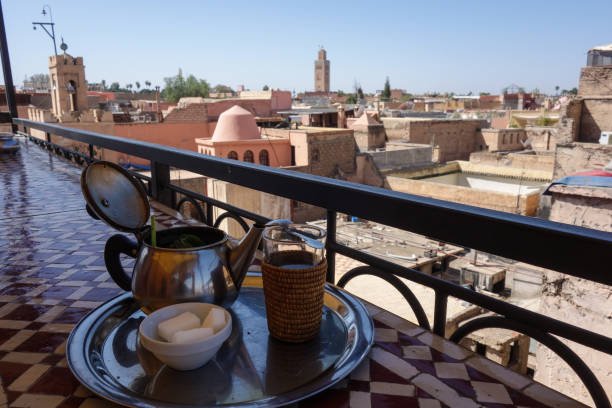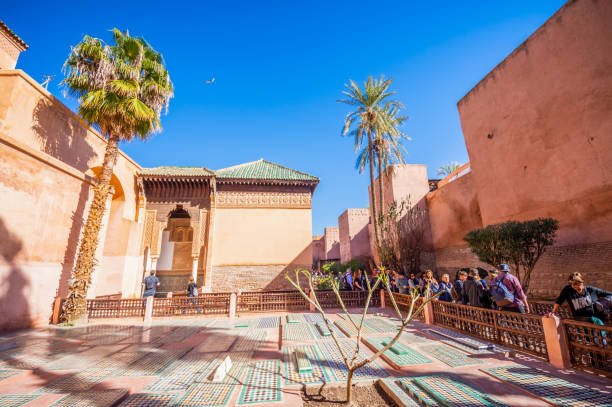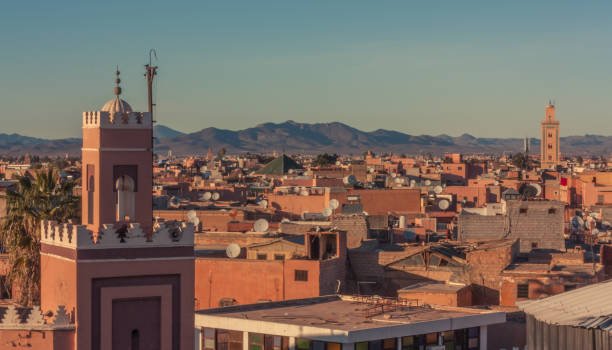Storytelling Traditions in Marrakech
The Arabic nights became legends and living photographic events that are being painted in the setting sun at the heart of the Moroccan desert, between Medina’s walls and the Mountains of Atlas. The storytelling traditions in Marrakech date back as far as one of the city’s oldest districts, the red-hued medina, with stories of history passed down by word of mouth.
More often than not, these are the stories that have been told from the time the first Morocco family brought another to their home, and they are the essence of Marrakech storytelling and are a secret peek into a world of culture and magic that plays on the shadows of the lamplight. There are very many places of interest in this world today, and this little tour through the twists and turns of the old city will unveil the fascinating world of storytelling traditions in Marrakech.
The Origin of Marrakech’s Storytelling
It has been pointed out that the storytelling traditions in Marrakech date back to the early years of the city, its inception in the 11th century. Being an important center of commerce and, therefore, exchange, Marrakech emerged as a hybrid of stories from all over the North Africa and Middle East, as well as beyond. One can believe that travelers, merchants, and pilgrims have left their stories, which were brought into the city, and became a part of it, becoming the features of the city’s historical legends.

These oral traditions served multiple purposes: entertainment, education, and the passing of tradition in modern society. In today’s world, people were historians, teachers, philosophers, and ethicists because people could not read and write. The storytelling traditions in Marrakech thus assumed the role of a tool through which knowledge can be transferred from one generation to the next.
The Halqa: Speaking of Marrakech: The Storytelling Circles
At the heart of the storytelling traditions in Marrakech is the halqa—a circle that the audience surrounds the storyteller within civic arenas. The best known of these is certainly in Jemaa el-Fnaa, which is the central square of the old town of Marrakech. During the night, various halqas are created around experienced hikayats, which turn the square into a true theater during the night.
The Art of the Hikayat
The hikayats, or the actual and professional storytellers, are the main source of storytelling traditions in Marrakech. These people study for about three years, performing various roles and memorizing at least two hundred stories. Thus, a hikayat doesn’t just tell a story but moves and lives through all characters; they draw pictures in one’s head for one to see.
The purpose of the hikayat is not only to provide entertainment. They are seen as smart people and people’s first port of call or as people who are called upon to arbitrate. They are normally narrators who uniquely impart moral or pragmatic truths, so they are considered unprofessional teachers in their respective societies. The storytelling traditions in Marrakech thus perform the function of holding society together in that they remind people of the values they and everyone else hold dear.
Women and Ourri: Narratives of Marrakech
Although male storytellers have had a significant share in public performance spaces in Marrakech, female narrators have shielded and relayed the history inside homes. Women in the homes and the hammams (the public baths) narrate stories that revolve around the topic of family genealogies, women’s daily existence and concern in the home, as well as their female experiences.
These private storytelling sessions are also a significant ‘tool’ of storytelling traditions in Marrakech, allowing women to share and receive the information and the code of ethics. However, in the growing decades, women have gained permission to narrate stories through performance, and the few are now performing their stories on the streets alongside the men.
The Impact of Modernization
As with many other traditional art forms, the storytelling traditions in Marrakech can be quite problematic in today’s world. Television, the internet, and social networking services have become other fad associations with entertainment and information dissemination. Young people born and raised in Marrakech, especially the independent ones, might not always choose to spend time in the square, listening to stories.
However, there is a developing interest in these cultural attachments. To contribute to the preservation and development of the storytelling traditions in Marrakech. National and regional associations of such tradition can organize storytelling fairs, train a new generation of storytellers conducting classes, and some schools include elements of oral tradition into their programs.
The Folklore Narratives in Contemporary Moroccan City of Marrakech
However, the storytelling traditions in Marrakech remain a continued developing work and are expressed in various forms. Now we know that some have incorporated this into tourism by taking their storytelling to riads (old Moroccan houses) and culture centers. Some have gone to the extreme of using technology to share their experiences through podcasts and social media sites.
These adaptations help it remain pertinent in the twenty-first century to the storytelling traditions in Marrakech. But the content of these traditions—the ability of words, spoken, to enlighten, entertain, and mobilize—is as powerful today as it was in the past.
The specificity of Marrakech as a city—aas a geopolitical entity, as a dream-diner’s home, as a director’s muse—iis irrelevant to the geographic spread of its stories.
The storytelling traditions in Marrakech have witnessed international recognition in the recent past. Writers, artists, and filmmakers of the world have puis s’inspirer de ces narratives orales riche et diversifie. Marrakech’s stories have gone round and around the globe. This interest has also brought approximately the cultural identity among the local community members.
The storytelling traditions in Marrakech today bring in crowds from different parts of the world, and one in particular has witnessed the charm of these legendary stories. If the stories of Marrakech are to grow organically as a product of current cultural shifts while maintaining the unique cultural signature, it has to embrace this cultural exchange.
The Art Works Stated for the Purpose of Long-Term Storage (%).
Understanding the role and value of the oral history, different programs have been launched to record and promote the storytelling traditions in Marrakech. Writers, historians, and cultural societies are trying to document these stories, understand the mechanics of the performances involved, and collect documentation of this intangible asset.

Conclusion
The storytelling traditions in Marrakech are not mere fun; they are the living organism, which constitutes the part of the city. These are stories and legends that have been told from generation to generation and that give the tourists an opportunity to become acquainted with the culture of Morocco. They are the socializing agents, the enlighteners, and they are bridging time and space.
FAQs
Is it possible to see the storytelling traditions in Marrakech while on a tour?
Of course, many of these traditions can be observed by tourists as they happen in real life. The best launch point is the Jemaa el-Fnaa square at night when there is more than one storyteller available. Even though most of the stories are narrated in Arabic, the entertainers sometimes provide the translations. Also, due to the unique architecture and historical orientation, numerous riads and cultural centers host special storytelling nights for tourists.
Are the storytelling traditions in Marrakech only for adults?
Not at all! Not all the stories are for adult consumption, but many of the stories are for use by both kids and grownups. In fact, storytelling has been considered to be a method of amusement and instruction particularly used on children. There are various types of storytellers, such as those specializing in children’s stories, hence good for families that are tourists in Marrakech.

